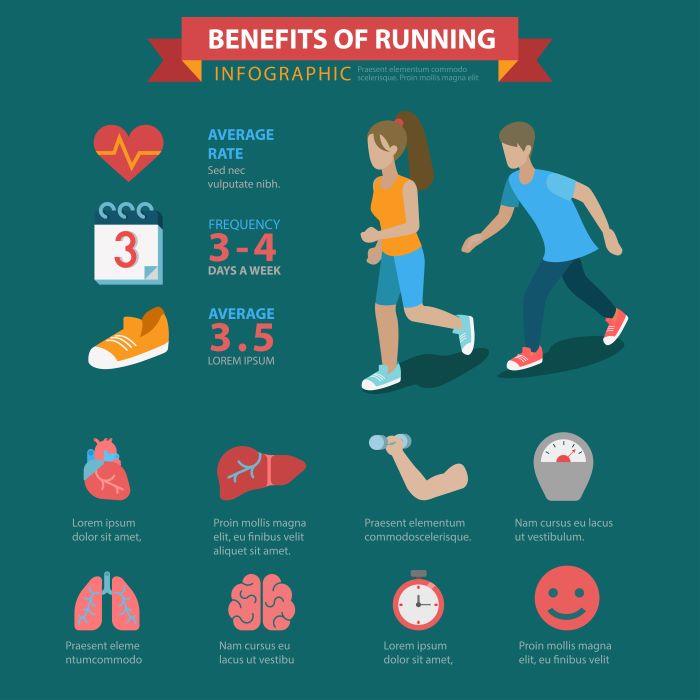Embarking on a journey of half marathon training on keto is an exhilarating blend of challenge and reward. For those who are passionate about running, the idea of combining a low-carbohydrate, high-fat diet with endurance training may seem daunting, yet it is a potent approach that can lead to incredible results. The ketogenic diet, known for its ability to promote fat burning and enhance energy levels, can be a game-changer for runners aiming to boost their performance.
As you dive into this training regimen, it is essential to understand the fundamental principles of both the keto diet and half marathon preparation. Here are some key aspects to consider:
- Adaptation Phase: Transitioning to a keto diet requires time for your body to adapt to burning fat for fuel instead of carbohydrates.
- Nutritional Focus: Prioritize healthy fats, moderate protein, and very low carbohydrates to optimize your energy levels.
- Hydration Strategies: Maintaining hydration is crucial, especially as the body may require more electrolytes during keto.
By understanding these elements, you set the groundwork for a successful training journey. If you’re eager to delve deeper into the intricacies of keto and running, visit our website to learn more and get started today! Click here.
Understanding the Keto Diet for Runners

For runners, understanding the keto diet is essential to harness its benefits effectively. The ketogenic diet, characterized by low carbohydrate and high fat intake, shifts the body’s primary energy source from glucose to ketones, which are derived from fat. This metabolic state is known as ketosis, and it can have significant implications for endurance athletes.
Here are some critical components of the keto diet tailored for runners:
- Macronutrient Ratio: A typical keto diet consists of approximately 70-75% fats, 20-25% protein, and only 5-10% carbohydrates. This ratio helps to encourage the body to enter and maintain ketosis.
- Fat Adaptation: Adapting to a keto diet can take anywhere from a few days to a few weeks. During this period, runners may experience fatigue as their bodies adjust to using fat as the primary energy source.
- Quality of Fats: Focus on incorporating healthy fats such as avocados, nuts, seeds, olive oil, and fatty fish. These not only provide energy but also offer essential nutrients.
- Protein Intake: While protein is necessary, excessive consumption can hinder ketosis. It’s crucial to consume moderate amounts to support muscle repair without disrupting metabolic adaptation.
Understanding these elements of the keto diet equips runners with the knowledge needed to optimize their training and performance. By embracing this nutritional approach, you can unlock a new level of endurance and efficiency.
Essential Nutrients for Half Marathon Training

Training for a half marathon, especially while following a keto diet, requires a keen understanding of essential nutrients that support performance and recovery. As runners, it’s crucial to fuel the body with the right nutrients to enhance endurance and maintain energy levels during long runs.
Here are some key nutrients to focus on:
- Electrolytes: Maintaining electrolyte balance is vital, particularly when on a keto diet, as the body tends to excrete more sodium and potassium. Consider incorporating foods like leafy greens, nuts, and avocados to replenish these essential minerals.
- Omega-3 Fatty Acids: These healthy fats, found in fatty fish like salmon and walnuts, can help reduce inflammation and enhance recovery, which is beneficial during intensive training phases.
- Fiber: While carbs are limited, fiber is essential for digestive health and can be obtained from low-carb vegetables like broccoli, spinach, and cauliflower. Fiber also helps in keeping you feeling satiated.
- Vitamins and Minerals: Vitamins, particularly B vitamins, play a role in energy metabolism. Foods like eggs, leafy greens, and seeds can provide these nutrients. Additionally, don’t forget about minerals like magnesium and zinc, which are crucial for muscle function and recovery.
Incorporating these essential nutrients into your diet not only supports your training regimen but also enhances overall health. By focusing on nutrient-dense, low-carb foods, you can optimize your performance while adhering to your keto lifestyle.
Creating a Balanced Keto Meal Plan

Creating a balanced keto meal plan is crucial for anyone training for a half marathon while adhering to a ketogenic diet. A well-structured meal plan should ensure that you are getting the right balance of macronutrients while fueling your body adequately for the demands of training.
Here are some steps to help you create a balanced keto meal plan:
- Understand Your Macros: A typical keto diet consists of approximately 70-75% fats, 20-25% protein, and 5-10% carbohydrates. Use a macro calculator to determine your specific needs based on your training intensity and body weight.
- Focus on Whole Foods: Prioritize whole, unprocessed foods to ensure that you are receiving essential vitamins and minerals. Foods like avocados, nuts, seeds, meat, and non-starchy vegetables should be staples in your meal plan.
- Plan for Pre- and Post-Workout Nutrition: Incorporate meals or snacks that are rich in healthy fats and moderate in protein before and after your workouts. For example, a smoothie made with coconut milk, spinach, and protein powder can serve as an excellent pre-workout option.
- Stay Hydrated: Adequate hydration is key, especially on a keto diet. Include electrolyte-rich beverages or supplements, and don’t forget to drink plenty of water throughout the day.
- Experiment with Meal Timing: Some athletes find success with intermittent fasting or adjusting their meal timing based on their training schedule. Experiment to find what works best for your energy levels and performance.
By carefully crafting a meal plan that aligns with your training goals, you can effectively support your body’s needs while enjoying the benefits of a ketogenic lifestyle. Remember, consistency is key!
Hydration Strategies while Training on Keto
Hydration is a crucial aspect of training, especially when following a ketogenic diet. The body undergoes various changes as it adapts to ketosis, which can impact hydration levels and electrolyte balance. Here are some effective hydration strategies to keep in mind during your half marathon training on keto:
- Increase Water Intake: On a ketogenic diet, your body tends to excrete more water, leading to increased fluid loss. Aim to drink at least 2-3 liters of water per day, adjusting as needed based on your activity level and climate.
- Incorporate Electrolytes: As your body sheds water, you also lose essential electrolytes like sodium, potassium, and magnesium. Consider adding electrolyte-rich foods such as avocados, leafy greens, and nuts to your meals, or use electrolyte supplements to maintain balance.
- Monitor Urine Color: A simple way to gauge your hydration status is by monitoring the color of your urine. Aim for a light yellow color, which indicates adequate hydration. Dark urine may signal dehydration.
- Hydrate Before, During, and After Workouts: Ensure you are well-hydrated before starting your training. During long runs, especially those exceeding an hour, consider sipping on a ketogenic-friendly electrolyte drink to replenish lost fluids and electrolytes. Post-workout, rehydrate to aid recovery.
- Use Hydration Packs or Bottles: When training, having easy access to water can make a significant difference. Use hydration packs or carry a water bottle to ensure you can drink regularly during your runs.
By implementing these hydration strategies, you will ensure that your body remains properly hydrated and ready to tackle the challenges of half marathon training on keto. Staying ahead of your hydration needs will not only enhance your performance but also contribute to your overall well-being during your training journey.
Tips for Successful Race Day Performance

Race day is the culmination of your hard work and dedication during your half marathon training on keto. To ensure you perform at your best and enjoy the experience, consider the following tips for a successful race day:
- Stick to Your Routine: Familiarity breeds confidence. On race day, try to maintain your usual pre-race routine, including your breakfast, warm-up exercises, and hydration practices. This helps keep your body in a rhythm it’s accustomed to.
- Fuel Strategically: Depending on your training plan, consume a light, keto-friendly meal or snack a few hours before the race. Options like hard-boiled eggs, cheese, or a handful of nuts can provide sustained energy without spiking your blood sugar.
- Dress for Success: Choose your race-day attire wisely. Opt for moisture-wicking fabrics and ensure that your shoes are well broken-in to avoid blisters. Consider the weather conditions and dress in layers if necessary.
- Stay Calm and Positive: Pre-race nerves are normal. Engage in calming techniques such as deep breathing or visualization to ease anxiety. Focusing on positive thoughts can boost your confidence and enhance your performance.
- Know the Course: Familiarize yourself with the race course. Understanding the terrain, elevation changes, and hydration stations will allow you to strategize your pacing and hydration needs effectively.
- Embrace the Experience: Remember to enjoy the atmosphere and camaraderie with fellow runners. The energy of a race day is unlike any other, and engaging with the community can enhance your motivation.
By following these tips, you can set yourself up for a successful race day, ensuring that you not only meet your goals but also relish the journey. Visit our website to learn more and get started today! Click here.


